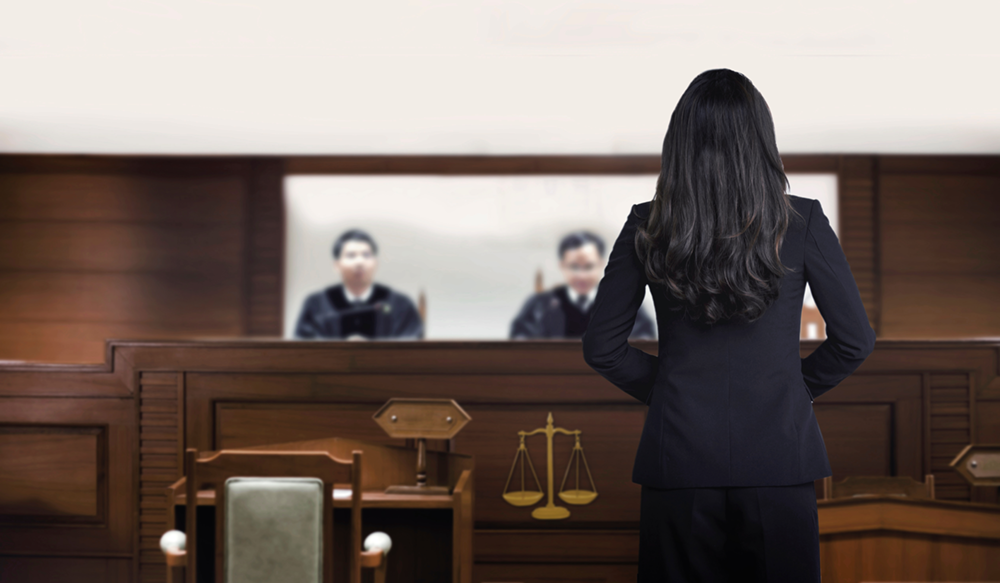From Concept to Courtroom: Steps to Create Effective and Convincing Trial Presentations
From Concept to Courtroom: Steps to Create Effective and Convincing Trial Presentations
Blog Article
How to Produce Engaging Trial Discussions That Gain Juries and Judges
Crafting engaging trial discussions that mesmerize courts and judges is a nuanced art that needs a strategic method. By utilizing innovative aesthetic devices, including interactive aspects, and devoting time to strenuous method and wedding rehearsal, lawful professionals can substantially improve the influence of their court room presentations.
Recognizing Your Target Market
To successfully involve your target market during trial presentations, it is critical to recognize their preferences, assumptions, and degree of expertise in the topic. By tailoring your presentation to satisfy the certain requirements of the audience, you can boost their understanding and retention of the details provided.
Begin by investigating the demographics of the audience, such as age, education degree, and profession. This details can assist you determine their familiarity with legal treatments and change your discussion design accordingly. For instance, a court might require less complex language and even more aesthetic help compared to a team of lawful specialists.
Moreover, consider the emotional and mental facets of your target market. Are they understanding towards particular arguments or even more inclined towards facts and proof? Comprehending these nuances can assist you mount your presentation in a manner that resonates with the audience on a deeper degree.
Storytelling Strategies
Understanding your target market's expectations and choices can significantly affect the efficiency of your trial discussions, specifically when applying storytelling methods to convince and astound. Narration is an effective device that can aid lawyers link with courts and juries on an extra psychological degree, making complicated lawful arguments much more relatable and memorable.

Including vivid information, individual stories, and ornate devices can additionally improve the narration experience, keeping the target market invested and involved in the end result of the case. By crafting an influential tale that resonates with the worths and emotions of the court and courts, legal representatives can increase the chances of winning their arguments and accomplishing desirable judgments.
Aesthetic Presentation Tools
Using visual discussion devices can greatly enhance the impact and performance of test presentations by providing a visually engaging means to communicate intricate details to judges and juries. Aesthetic help such as charts, representations, graphs, and computer animations can help streamline elaborate details, making them more obtainable and understandable to the audience. By incorporating aesthetic elements into trial presentations, attorneys can produce an engaging story that reverberates with jurors and leaves a long lasting impression.

Including Interactive Aspects
Including interactive aspects right into test presentations can boost audience involvement and understanding, promoting an extra interactive and immersive about his courtroom experience. By incorporating components such as interactive timelines, 3D animations, clickable exhibitions, and virtual reality restorations, lawyers can captivate courts and jurors, making complex information a lot more available and memorable.
Interactive timelines enable a dynamic display screen of chronological events, aiding the target market realize the sequence of key occurrences in an instance. 3D animations can bring crime scenes or crash repairs to life, using an in-depth aesthetic representation that helps in clearing up elaborate details. Clickable exhibitions allow users to connect with evidence, documents, or pictures, enabling a hands-on exploration of crucial information.
Additionally, virtual reality restorations can deliver the audience right into the heart of the activity, giving a compelling viewpoint that typical discussions might lack. These interactive components not just involve the viewers but additionally equip them to actively join the test procedures, bring about an extra convincing and impactful court room discussion.
Practice and Rehearsal
To successfully take advantage of the capacity of interactive elements in test discussions, detailed technique and rehearsal are necessary to make sure seamless combination and shipment in the court setting. Method this page and rehearsal assistance test presenters come to be knowledgeable about the material, timing, and circulation of their presentations, enabling them to with confidence navigate via different elements such as video clips, computer animations, or interactive graphics. By rehearsing their delivery, presenters can refine their speaking abilities, body movement, and general discussion style to enhance persuasion and reliability before the jury and court.
During method sessions, presenters can determine any technological concerns that might arise with interactive components, making certain that everything runs smoothly during the real trial. Additionally, rehearsing in front of a simulated target market or colleagues can provide beneficial comments on the efficiency of the interactive components and the total discussion. This responses permits presenters to make needed modifications and renovations prior to entering the courtroom, ultimately boosting the effect and success of their test discussions.
Conclusion
To conclude, producing appealing test presentations that mesmerize courts and judges requires a deep understanding of the audience, reliable storytelling strategies, visual devices, interactive aspects, and thorough technique (Trial Presentations). By carrying out these approaches, lawyers can effectively communicate their arguments and proof in an engaging fashion that reverberates with the decision-makers in the court
Making use of aesthetic discussion devices can greatly improve the impact and efficiency of trial discussions by providing an aesthetically engaging means to communicate complex information to judges and courts. By integrating aesthetic aspects right into trial discussions, lawyers can create a compelling narrative that resonates with jurors and leaves a long-term impression.
One prominent visual presentation device is the use of multimedia discussions, which permit for the combination of videos, photographs, and audio recordings to supplement spoken disagreements. Trial Presentations.To effectively utilize the capacity of interactive elements in trial discussions, thorough technique and practice session are important to make certain seamless link integration and shipment in the court setting. Method and rehearsal help test speakers become familiar with the material, timing, and flow of their presentations, enabling them to with confidence navigate with various components such as video clips, computer animations, or interactive graphics
Report this page